By Jacob Marion
Exhibit A: Investigating Crime and Footwear is the newest addition to the Bata Shoe Museum’s (BSM) revolving galleries and aims to educate the public on how footwear plays a role in committing, solving and studying crime throughout history.
Attendees can view a variety of unique and historical shoes pulled from the BSM’s archives as well as pieces from various other museums and collections.
In one glass case, an unassuming pair of men’s black leather dress shoes is displayed to show off a detachable sole with multiple hidden compartments moulded into the rubber heel. Similar shoes have been used for decades to stash anything from drugs to deadly poison to censored material.
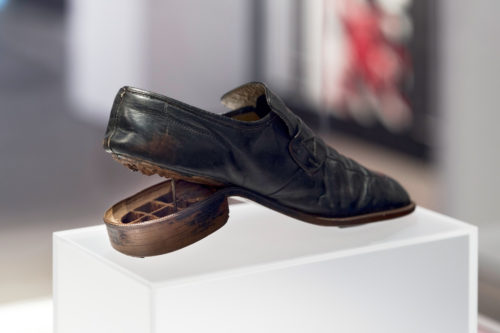
In the centre of the room is a pair of dusty wooden clogs that were carved backwards to leave the impression that smugglers had walked in the opposite direction. The specific pair on display were crafted in the mid-1940s by Dutch smugglers who wanted to confuse customs officers at the border between Belgium and the Netherlands.
Even more covert, felt-soled cat-burglar overshoes—on loan from the Paris Police Museum—showed how burglars would slip silencing sandals over their shoes to muffle footsteps during a robbery.
Looking closely, patrons walking through the exhibit might spot assorted shoemaking tools on loan from Toronto Metropolitan University’s (TMU) Fashion Research Collection. Inmates from the Kingston Penitentiary used the set of tools to make shoes as part of their prison sentence. The goods were then sold to government branches like the Royal Canadian Mounted Police. The prison workshop ran throughout the 20th century before protests over the cheap labour and unfair pricing ended the practice.
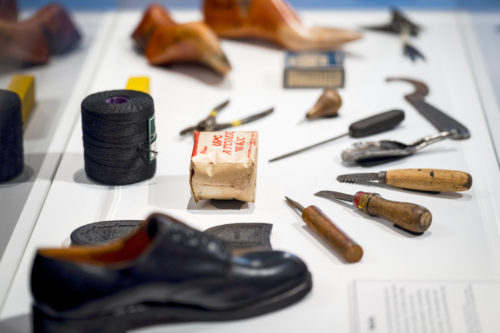
The concept behind the exhibit came from an extensive online project titled Fabric of Crime, which investigated the use of clothing as weaponry, evidence and disguise. The research venture was led by Alison Matthews David, a fashion professor at TMU and co-investigated by Elizabeth Semmelhack, the BSM’s director and senior curator.
The pair had worked together on previous exhibitions, so when David asked Semmelhack if she wanted to turn their research into a display for the public, Semmelhack replied, “how could I say no?”
David and Semmelhack travelled to Paris and London together where they explored police archives and delved further into their research.
“We really wanted to think about the importance of footprints in crime and criminal detection,” Semmelhack explained. “But we also wanted to be thoughtful, so we weren’t just thinking about people who were detecting crime but also how certain people are criminalized.”
The idea to research the criminalized led to Exhibit A’s exploration of how biases surrounding race, gender, sexuality and class can impede footwear’s use in forensics and crime-solving.
Near the entrance to the exhibition, excerpts of text spread across the wall explains how French criminologist Edmond Locard believed objects from crime scenes were “more truthful and reliable than people’s testimony…witnesses could forget or lie about events but stains, fibres and footprints provide unbiased proof of guilt or innocence.”
Professor Monica Sauer, who teaches a forensic science course at TMU, says in theory, this should be true.
“Forensics itself, like any hard science, is not biased,” she explained. “The science can determine the brand, size, footprint inside the shoe, pressure points of toes, but it does not label it with a gender or specific use.”
Exhibit A counterpoints Locard’s principle, stating that while clothing and footwear offer important clues in criminal cases, they also play a much more complex role in actual crime and who we, often wrongly, have culturally assumed to be a criminal.
“We weren’t just thinking about people who were detecting crime but also how certain people are criminalized”
Throughout the exhibition, many examples of the biases and inaccurate conclusions that can be drawn from footwear are reflected. Towards the back, a large floor-to-ceiling glass case displays a variety of modern footwear on stark-white podiums. Labelled “Dangerous Glamour,” each of these pieces represent styles either linked to criminal activity or even deemed “fashion crimes” in their own right.
Sometimes, clothing is used to blame victims for the crimes committed against them, suggesting that they may have been “asking for it” by dressing in a promiscuous or counterculture way. A pair of glossy, red patent pump heels could represent how survivors of sexual violence may be blamed for their assault.
The shiny red heels on display in Exhibit A are designed to fit a man’s size 14 foot and serve as a reminder of how gender normalities were policed in Europe and North America. In 1947, an Eaton’s department store employee and part-time drag queen named John Herbert was attacked and almost mugged on the streets of Toronto.
Despite being the victim of the crime, he was sent to a reformatory because he was wearing “female-coded dress” at the time of the robbery.
On an adjacent podium is a pair of uncharacteristically pristine red combat boots from the famous English brand, Dr. Martens. Often associated with punk movements, the working class and even white nationalism, wearing a pair of these combat boots can label their wearer as a delinquent even if the brand has become more mainstream.
Other pairs of shoes perpetuate stereotypes that harm racialized communities. In a May 1990 issue of Sports Illustrated, the cover story “Your Sneakers or Your Life” suggested race was a significant component of armed robberies over expensive sneakers.
The featured artwork depicted a young Black man pressing a gun to the back of another young Black man while stealing his Air Jordans. The article blamed basketball player Michael Jordan and director Spike Lee for “willingly tapping into the flow of drug and gang money” but didn’t criticize the sneakers’ white endorsers or thefts committed by white criminals.
The issue of bias affecting clothing’s use in crime-solving was especially concerning during the early history of forensics. Before the introduction of fingerprinting and DNA in the early 20th century, footprints were key in solving crime and some of the only evidence in many cases. This left a lot of room for ambiguity.
Professor Raji Iyer, who teaches forensic science at TMU and York University, says this opportunity for interpretation is where bias can affect investigations and cause officials to jump to conclusions.
“It does creep up into the analysis,” she said in an interview with The Eyeopener. “Science can also be wrongly interpreted.”
Iyer concludes that aside from the possibility of bad or misconstrued science, forensics is affected by the bias that police officers and investigators may impose on it.
David and Semmelhack acknowledge in text throughout the exhibit that many have the privilege of experiencing danger and crime from a safe distance through fiction and media. By using Exhibit A to highlight the reality of how investigations can be affected by biases imposed on forensics, they hope more people will understand how something as simple as footwear can be so intrinsically linked to crime.
For Semmelhack, finding a deeper message to explore and highlight with these exhibitions is essential to the mission and core values of the BSM.
“Almost every exhibition has to have these considerations,” she said. “It’s a strength of what we do here.”


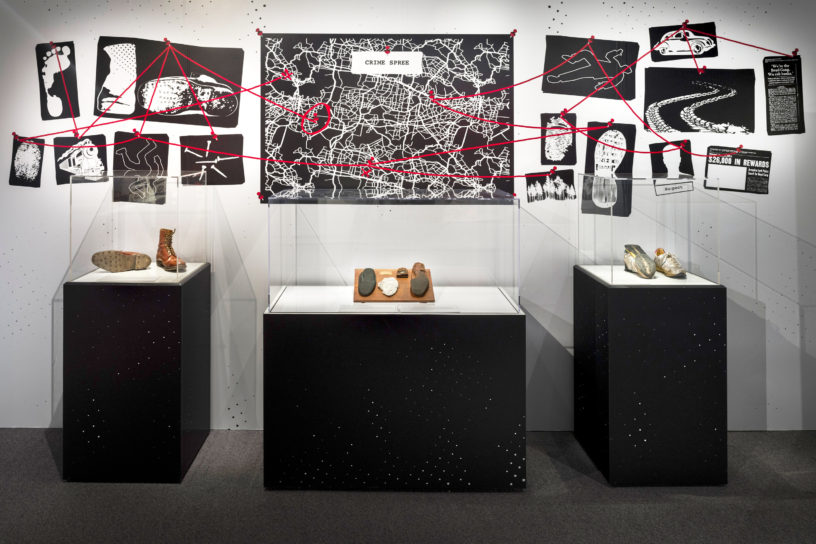
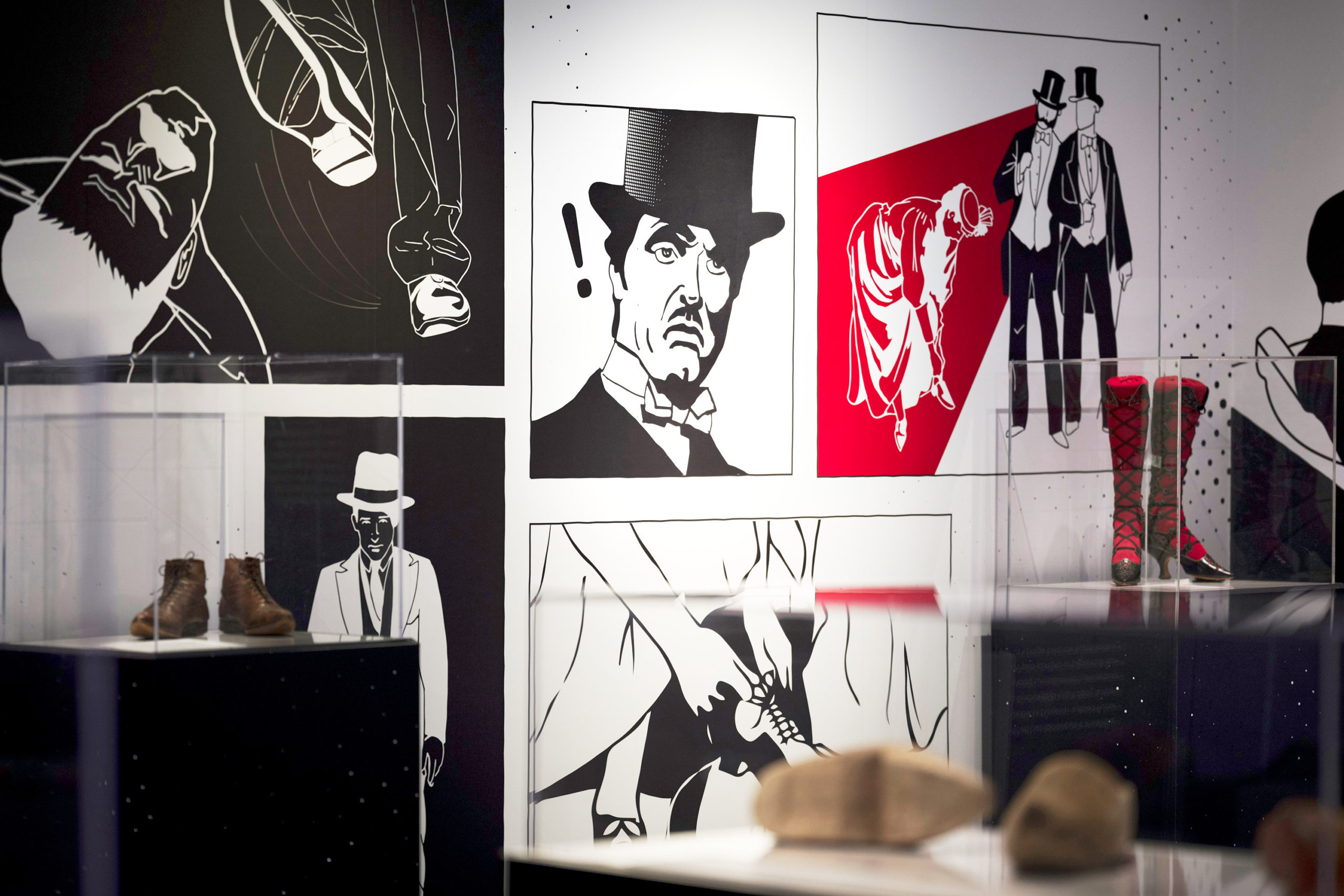
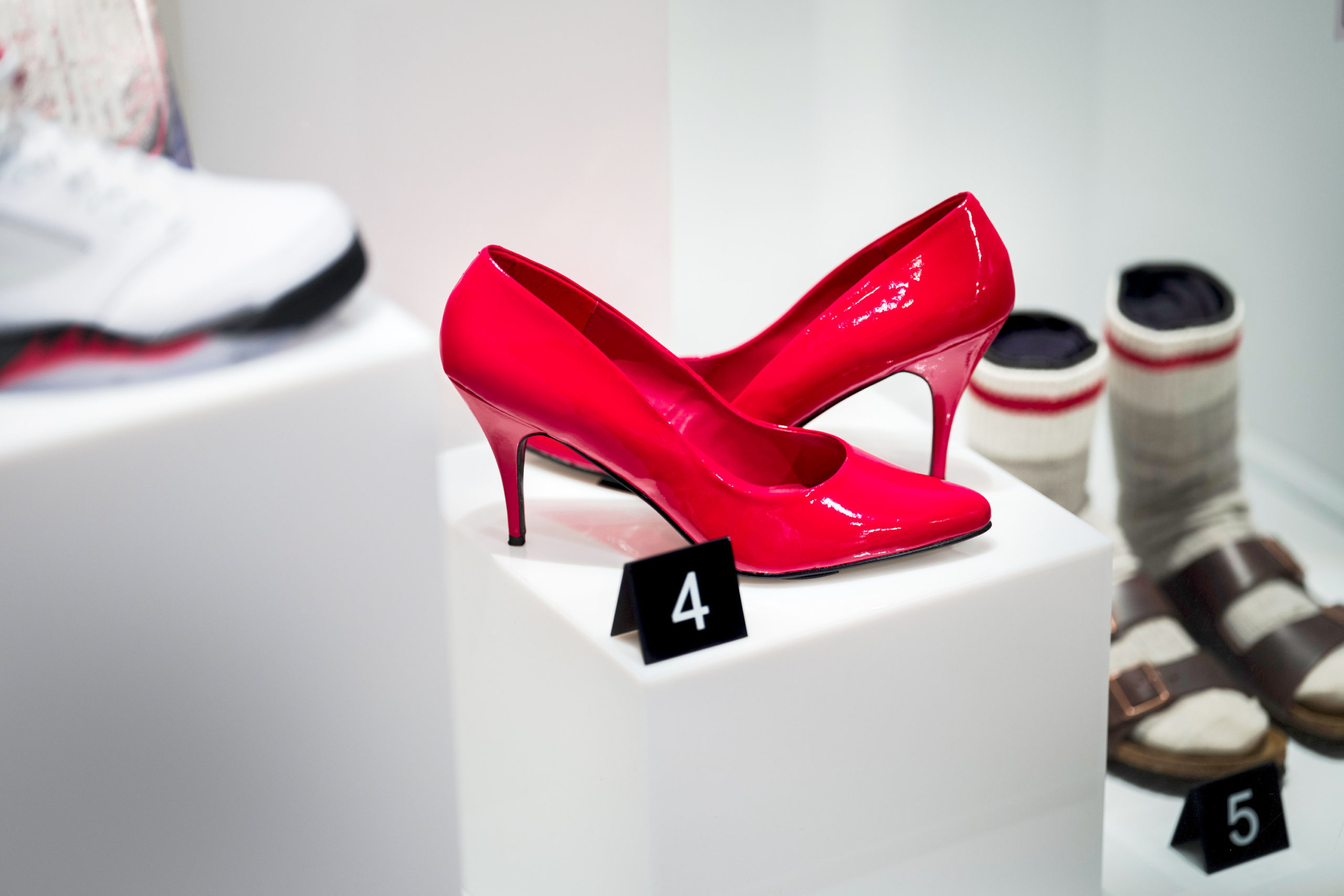
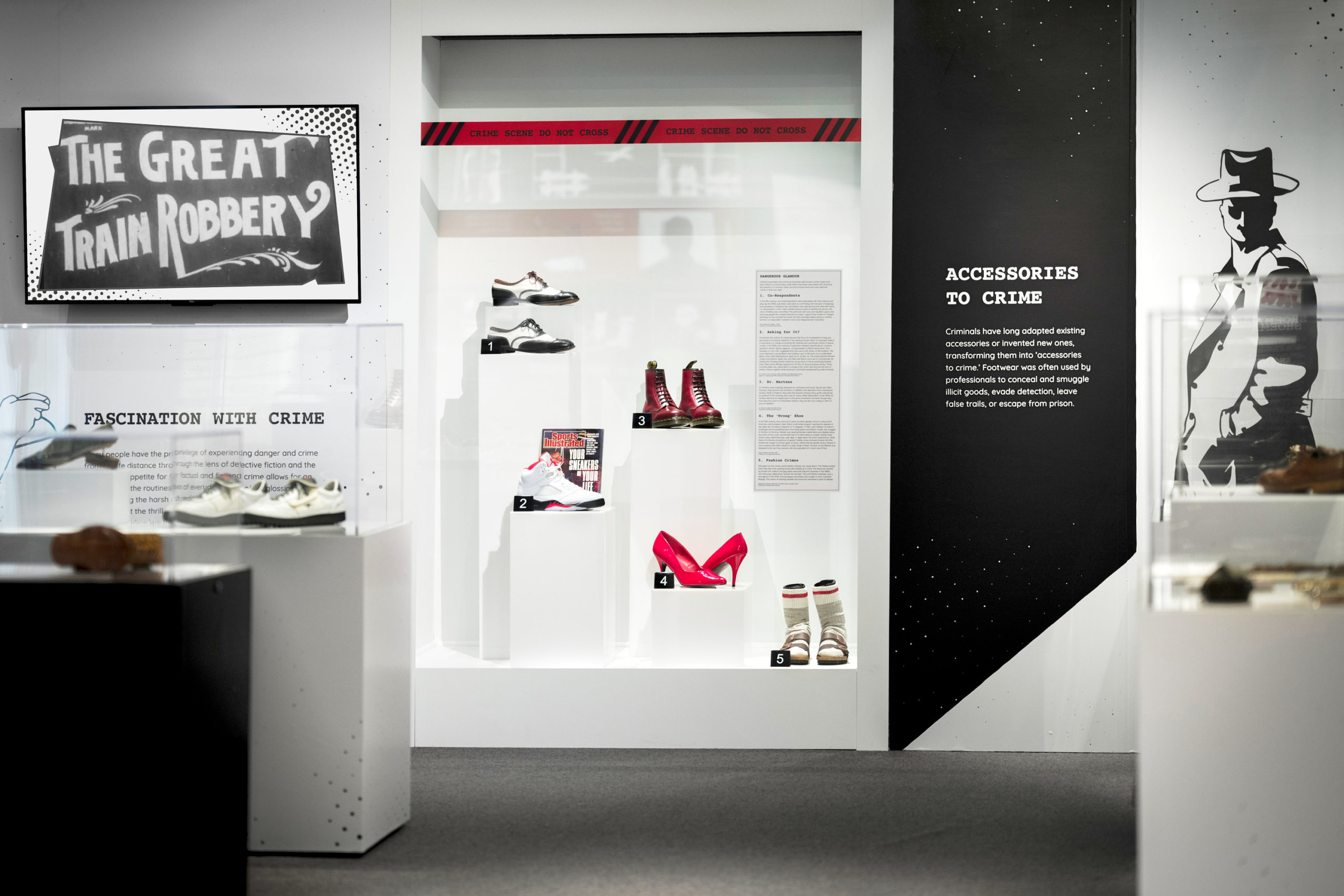
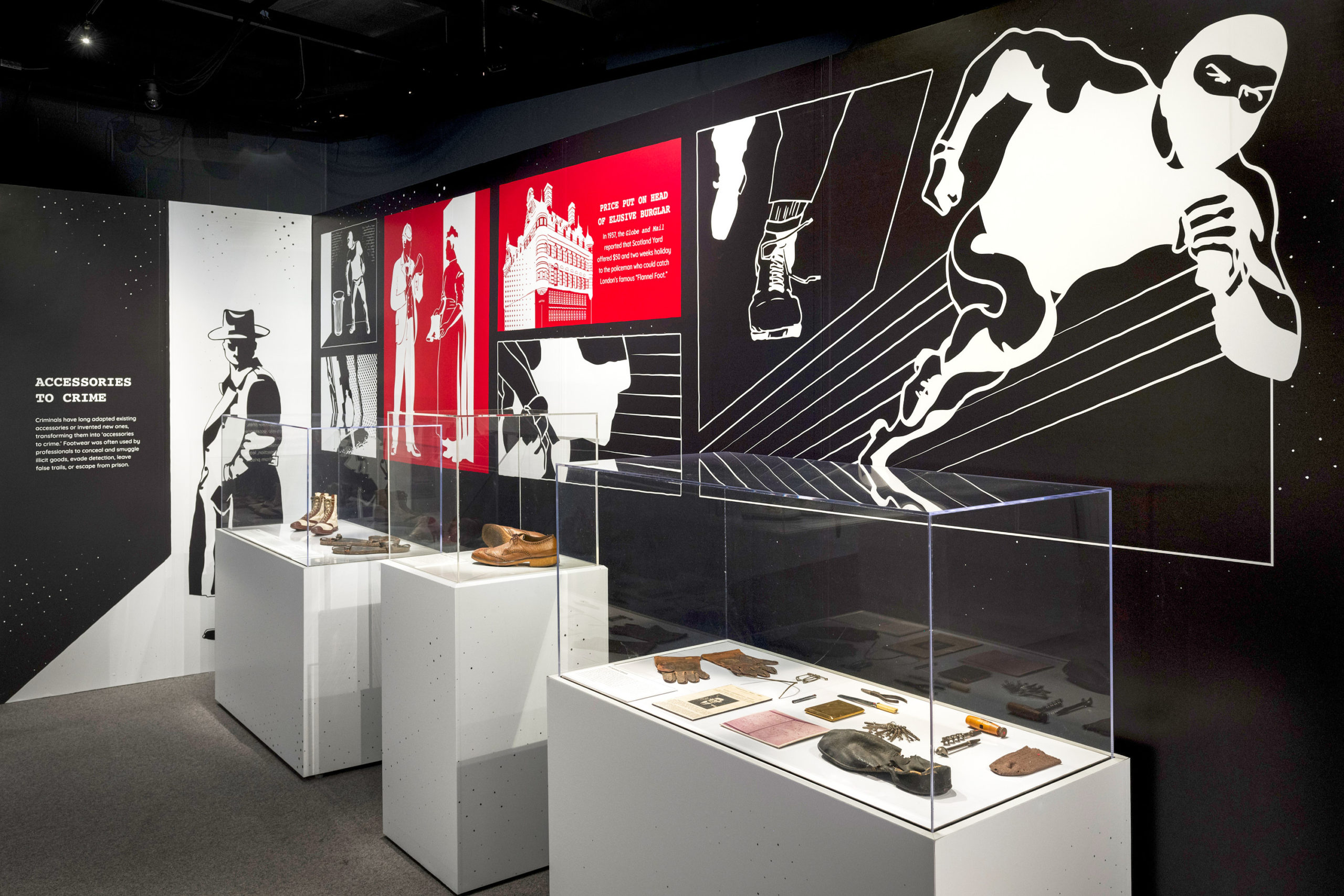








Leave a Reply